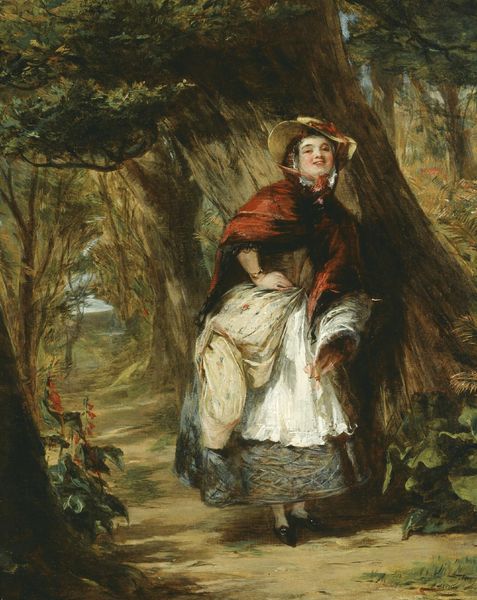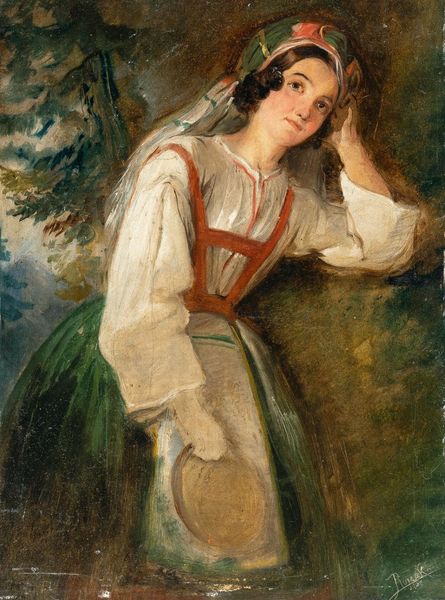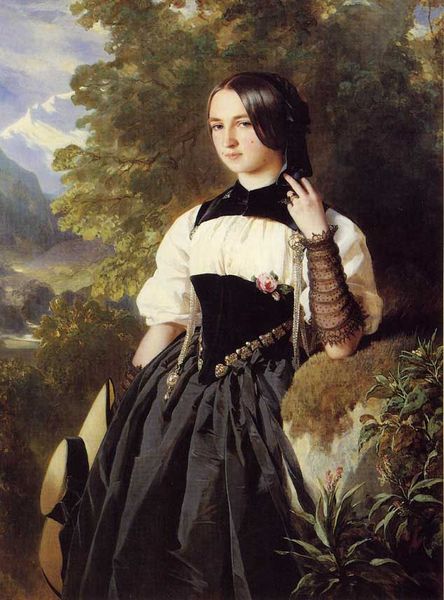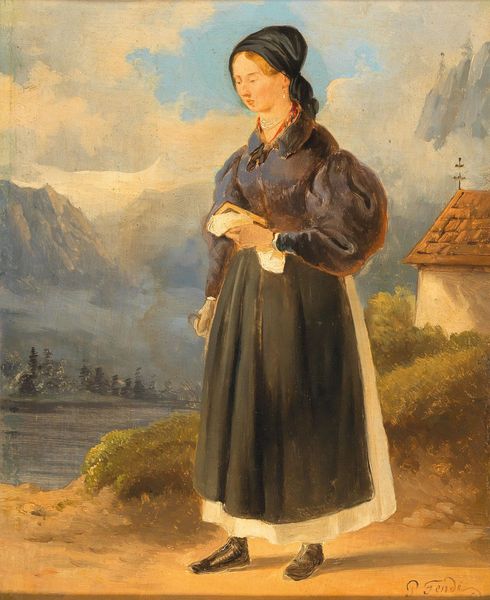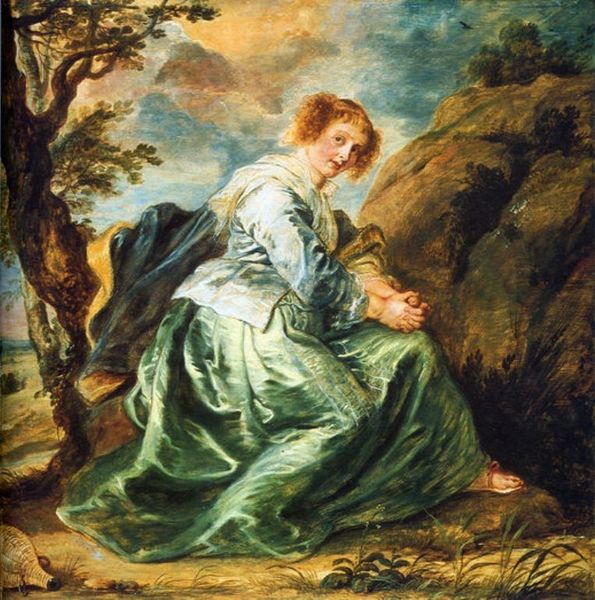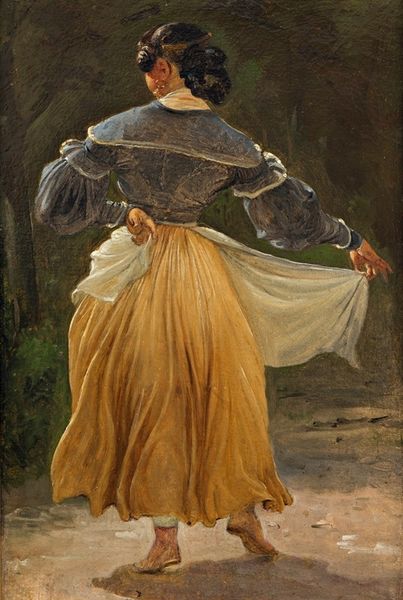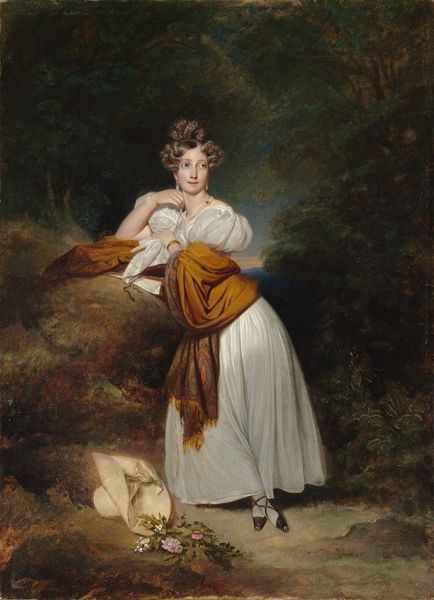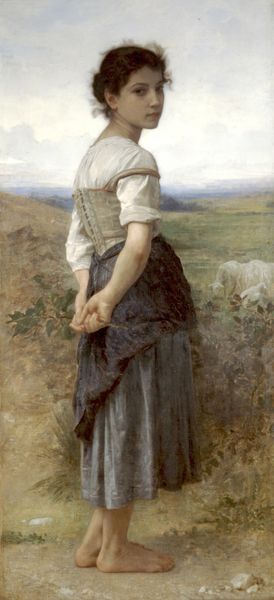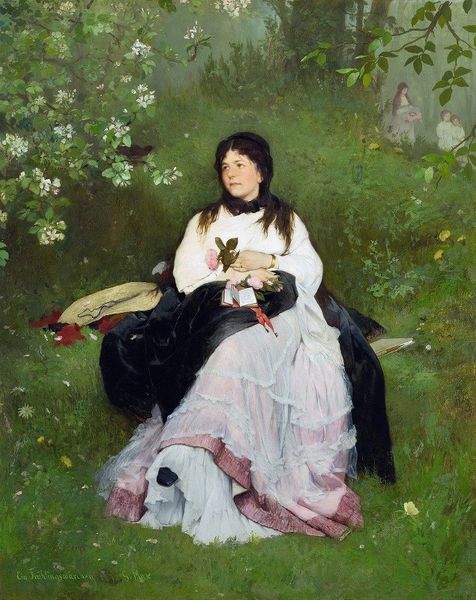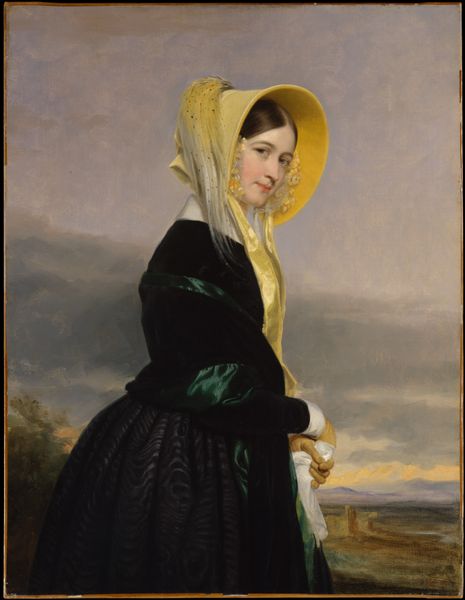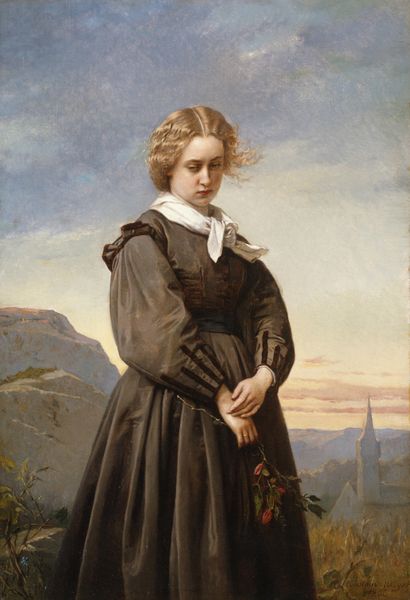
painting, oil-paint
#
portrait
#
narrative-art
#
painting
#
oil-paint
#
figuration
#
group-portraits
#
history-painting
#
pre-raphaelites
#
impressionist inspired
Copyright: Public domain
Editor: Here we have "The Royalist," an oil painting by Sir John Everett Millais, though its exact date is unknown. There's this clandestine feeling about it, with figures hidden amongst the trees, their expressions… charged. How do you interpret this work, especially considering Millais’s place in art history? Curator: Well, let's consider the socio-political backdrop. Millais, a Pre-Raphaelite, was working in a time of immense historical fascination and also anxiety in Victorian England. “The Royalist,” with its title alone, hints at allegiance to the monarchy. Considering that many historical paintings sought to promote public role of art, we can speculate about who it depicts or could it allude to… perhaps those moments of hiding royal figures after battles? Do you get the sense of specific historical moment or is it something more symbolic? Editor: It definitely feels allegorical. The woman standing appears more composed, maybe protective, while the figure concealed looks fearful. I wouldn't have known where to start to look into the history though. Curator: It invites the viewers to reflect on loyalty and sacrifice in times of upheaval, particularly in light of historical conflicts, even within the British Isles itself. The Pre-Raphaelites were interested in visual story-telling and challenging the traditional academic history of the era through aesthetics, and the emotions on display are meant to invoke deep reflection in its viewers. It makes the painting less a straightforward historical depiction and more a comment on social structures and ideals. Editor: So, it's not just about history; it uses history to talk about society. That is helpful when looking for deeper themes in works like these. Curator: Exactly. By examining what was valued and questioned during Millais’ time – class, power, fidelity – we gain richer insight not just to understand the artwork, but the dialogue surrounding its imagery within the socio-political and historical contexts as well.
Comments
No comments
Be the first to comment and join the conversation on the ultimate creative platform.
